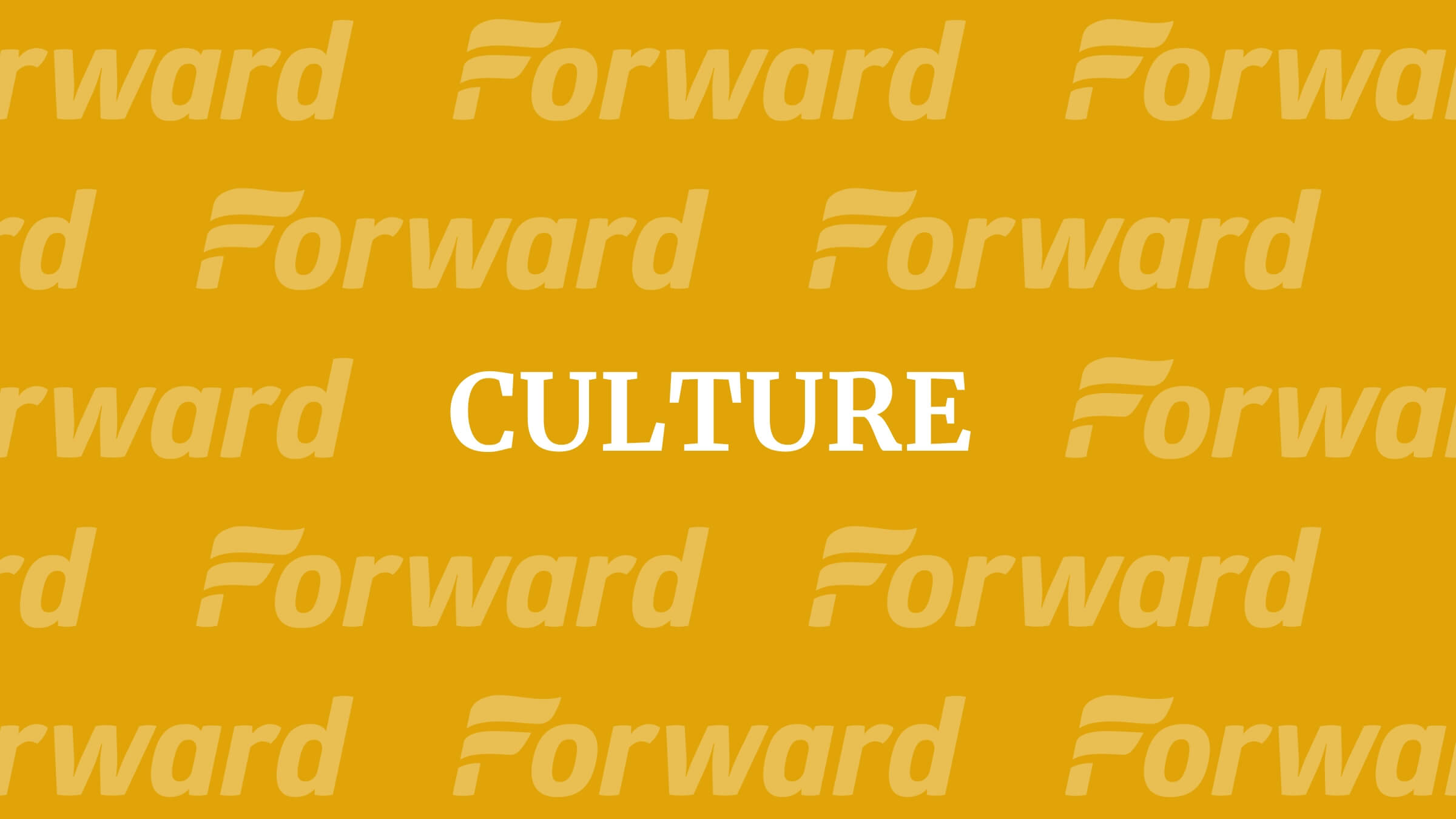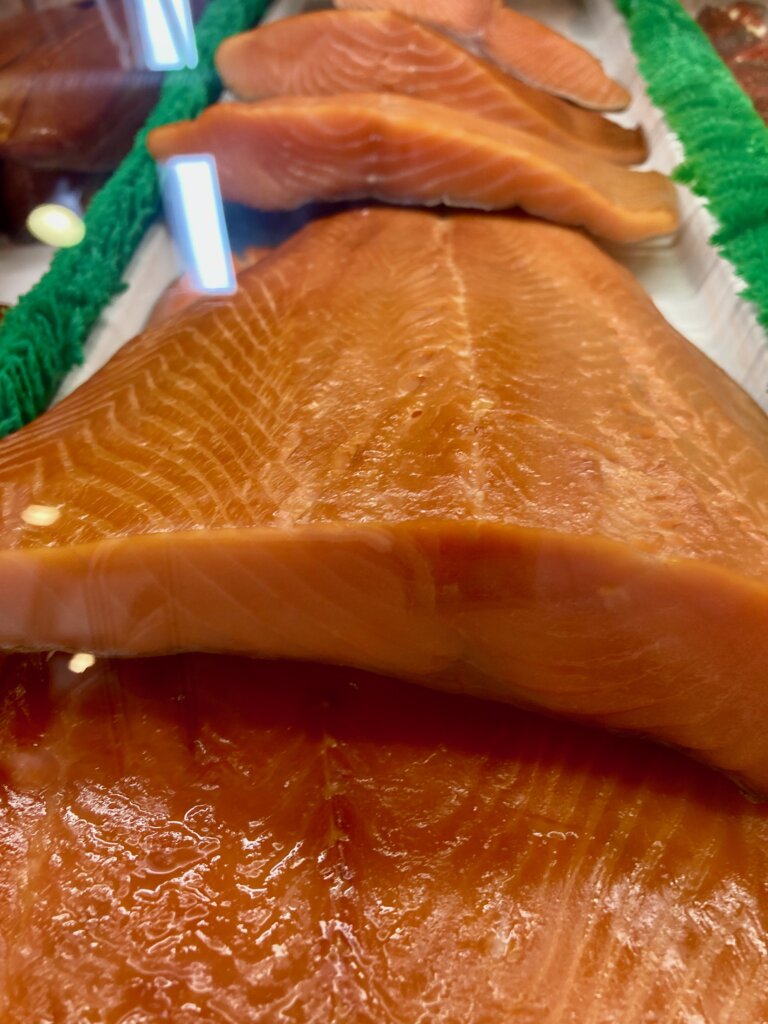This summer, may all your lox be wild lox
In many places, farmed salmon is a slow-motion environmental train wreck. This summer, think wild.

Graphic by Angelie Zaslavsky
On the rocky western coast of Vancouver Island, I watched a massive black bear use her front legs to flip a boulder the size of a dorm room fridge, searching for crabs and barnacles to eat. Suddenly, out of the screen of firs and spruce, her cub appeared, hungry for lunch. It was a pristine, dreamlike scene — until the captain of the Ocean Adventures tour boat we were on pointed to a football-field sized rectangle of floats bobbing nearby in the water.
“Salmon farms,” he said. “Don’t get me started.”
But he launched into a tirade anyway, saying the farmed, non-native Atlantic salmon infected local stocks, created dead zones of salmon feces, tangled marine mammals and were helping to send native wild salmon stocks into freefall.
“Lox,” I muttered, not meaning for him to hear.
But the captain heard and shot me a look of utter disdain. If you want to get wild salmon people angry, talk about how much you love your lox.
The lox I buy, the lox you buy, is farm-raised. Mine is usually from Brooklyn-based Acme Smoked Fish Corporation, the largest supplier of smoked fish in the United States. Smoky, salty, sweet, silky, it drapes over an artisanal bagel and cream cheese like a peach-colored Hermes scarf on a plush white sofa. But like all commercially made lox, it comes from farm-raised salmon.
I’m someone who tries, as best I can, to align my eating habits with my values, to put my morality where my mouth is. By now we all know what this means: Eat food grown as close to home as possible, stay away from fast and processed foods, eat little or no meat and strive to eat animals raised in sustainable, relatively kind ways (kind until, you know, someone kills them).
In Tofino, the small town from where we set out to look at bears, the best restaurants, like Wolf in the Fog, make a point of using only the native local salmon. But thanks in part to those salmon farms, there’s less and less of it. The town’s dockside fish market had one single filet of wild salmon for sale. “We sell it when we can get it,” the clerk told me, standing about 50 yards from waters that once teamed with the fish. In fact, the picturesque town is in the midst of an intense, neighbor-against-neighbor fight to deny the aquaculture farms their licenses, which come up for renewal this year.
Salmon that are raised in open-ocean pens are problematic, for all the reasons the captain said. The worst farms are depleting native fish stocks to manufacture feed. They use antibiotics, growth hormones, and orange dyes that turn a salmon’s naturally white flesh into something vaguely Trump-ish. Acceptable farms, which are certified by the independent Aquaculture Stewardship Council, forgo antibiotics and don’t overcrowd their pens. Monterey Aquarium’s well-regarded Seafood Watch program recommends ASC-certified salmon as a “buy” option, and that’s what Acme tries to use.
There are advantages to the farmed stuff: Iit is consistent in size and flavor and its fat-streaked flesh absorbs smoke, contributing to that silky mouthfeel. But most of all, there’s plenty of it, 2.65 million tons in 2020. Farmed salmon production surpassed wild catches in 1999, and has been growing 7% annually since. Today, wild salmon accounts for just one-fifth of all salmon consumption.
But the success of open ocean salmon farming comes at a cost — which the environment pays.
“The industry has reached a production level where biological boundaries are being pushed,” it said, which a fair reader might interpret to mean: Warning, ecological collapse ahead. Biologists, regulators, and community members, like in Tofino, are realizing that there’s only so much damage the ocean can sustain to supply endless lox.
Experts say the long-term solution might be, for lack of a better phrase, land salmon. Two years ago, Acme made a major investment in a tank farm in Miami. There fish are raised in a series of giant above-ground tanks where their effluent, feed, medications, dyes, diseases and sea lice can’t harm native stocks. The closest they’ll ever get to a natural body of water is when they are smoked, sliced and served in a beach cabana.
At that point, I have to wonder, will lox be lox? Not so long ago, after all, our great-grandparents ate lox that began life in rivers. Now we are careening toward a world where the solution to the demand for salmon, smoked or otherwise, is to build oversized wading pools stuffed with listless fish.
Coasting through the almost-pristine waters of British Columbia, I wonder why we don’t stop to consider an alternative future: that instead of inventing odder and odder ways to force feed tons of Frankenfish, we invest in protecting wild stocks and the oceans, rivers and streams they depend on?
It’s not as crazy as it sounds. In California and Alaska, a lot of people work hard to help wild stocks thrive.
“If it wasn’t sustainable, then there would be no fisheries,” David Goldenberg, executive director of the California Salmon Council, told me.

Goldenberg calls California wild salmon part of a “boutique fishery,” carefully managed to sustain harvests despite dams that obstruct salmon migration, warming oceans, and drought. The people who fish for salmon, either commercially or privately, must buy a $180 salmon stamp, the proceeds of which go toward habitat restoration projects. In other words, to save wild salmon, it actually helps to eat it.
“Consuming it keeps the industry alive, keeps the fishermen alive,” said Goldenberg, a Brooklyn native who grew “tired of concrete” and moved west to work in animal science. “Also it is the best tasting, most nutritious salmon we have.”
Back in LA, I bought a slab of California wild king salmon, the season’s first.
It glistened a deep orange and smelled faintly of the wind coming off the ocean. It was $43 a pound, easily the most I’ve ever paid for a piece of protein.
I seasoned it with salt, pepper and olive oil, grilled it until medium rare, and served it with a squeeze of fresh lemon. The first bite combined salt, fresh water, ocean, citrus and smoke. Nothing I tasted all year quite matched up to the flavor of this first salmon.
I bought another slab and cured and smoked it. It crowned a Nicoise salad that evening, but it would also have been pretty spectacular on a bagel.
The Native Americans of the Pacific Northwest actually held elaborate First Salmon ceremonies to welcome this fish, to thank the Creator for its return to the rivers, and to thank the spirit of the fish for coming into their nets. The closest I can come is the shehecheyanu, which I said under my breath as I chewed and swallowed my smoked wild salmon.
We were blessed with this majestic fish, and before we give up entirely, let’s at least support the efforts of those working to save it, and serve it, wild.

















